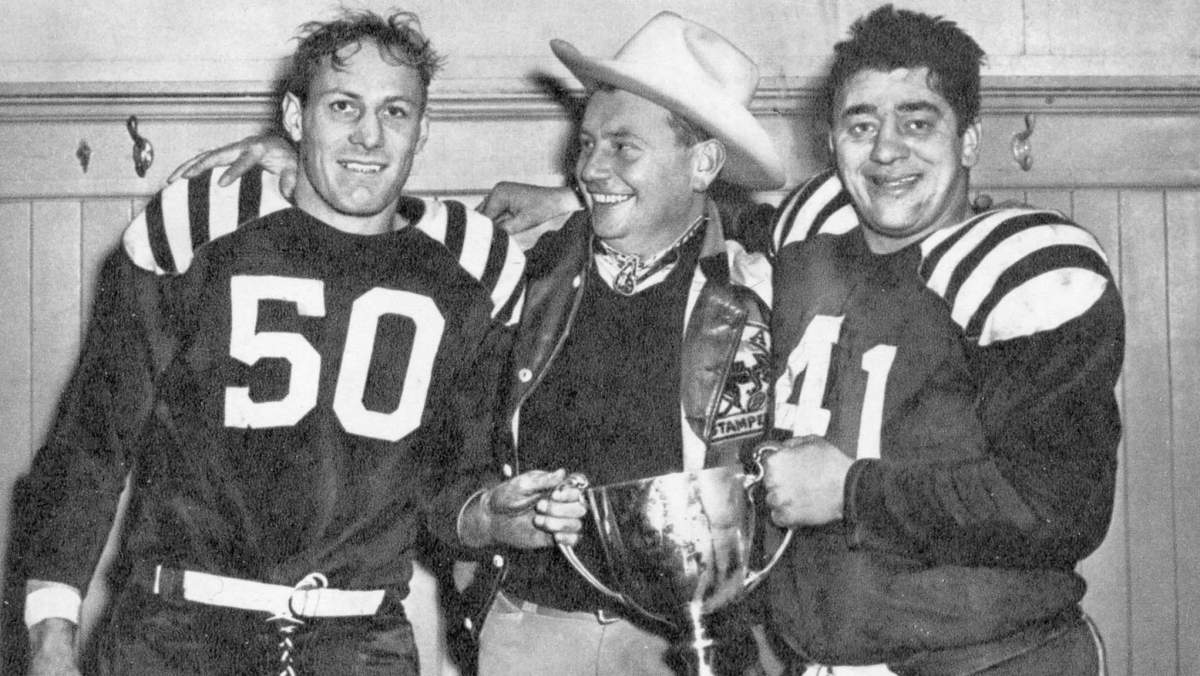When duty called, Alberta football players were quick to swap one uniform for another.

Decades later, Keoma, Alta.’s Shelly McElroy wants to make sure their sacrifices aren’t forgotten.
“The history of football and the history of the military had this parallel experience,” McElroy explained. “When you think about it, if you’re the right age for the military, you’d be the right age to play football too.
“Even before the Stamps were the Stamps, their history walked along with the history of southern Alberta, the history of Calgary and sometimes globally, too.”
McElroy has been studying the military ties to Alberta’s football community dating back to the First World War.
Many players from the now-defunct Calgary Tigers, Canucks and Bronks would go on to become aces, respected leader, and at times, make the ultimate sacrifice.
The list of the fallen includes Calgary pilot Donald MacQueen, who flew alongside notorious ace Billy McKnight, who McKnight Boulevard is named after.
“Don sent his dad a letter saying that on one occasion, he had to land his plane in rural France and the suspicious locals came to see what he was doing,” McElroy said. “He had used his high school French to explain that he was a Canadian, not a German because they weren’t very happy to see him.”
While 2020 marks the first year since 1919 that the Grey Cup won’t be handed out, football still continued through the early 1940s.
In 1944, England, Canadian and American forces squared off in the “Tea Bowl” to boost morale.

Get daily National news
Both sides had six weeks to train before playing in front of 32,000 confused British fans, with Paul ‘Pappy’ Rowe leading the Canadian Mustangs to a 16-6 victory.
The Calgary Stampeders, as we know them today, were born as the first troops returned home.
“In the last week of September 1945, we knew the guys were going to be coming back and so they picked out a new name for the team – they’re going to be called the Calgary Stampeders,” McElroy explained. “Calgary turned out to greet the first group of the infantrymen that had arrived back.
“They’re marching along to Mewata Stadium, there’s a band playing a song called, ‘The Gang’s All Here.’ But they weren’t.”
Young men like Donald MacQueen never got to experience that hero’s welcome.
He was declared missing when he was only 20 years old, his body eventually recovered and buried in Marne, France.
Back at home, Paul Rowe would captain the ragtag Stampeders to their first Grey Cup win in 1948.
McElroy will share the stories of Rowe, MacQueen and dozens more in a book she hopes to complete by next year’s Labour Day Classic, in hopes that their sacrifices are never forgotten.
“I found a program from 1946 that listed all the Calgary Stampeders that had been in the army, the air force and the navy. It was like three-quarters of the guys,” McElroy said. “Every year, we go to McMahon Stadium and we watch those jets go roaring overhead on Labour Day. I can’t be the only one secretly crying behind my sunglasses because it’s so cool. Those military links were there from day one.”







Comments